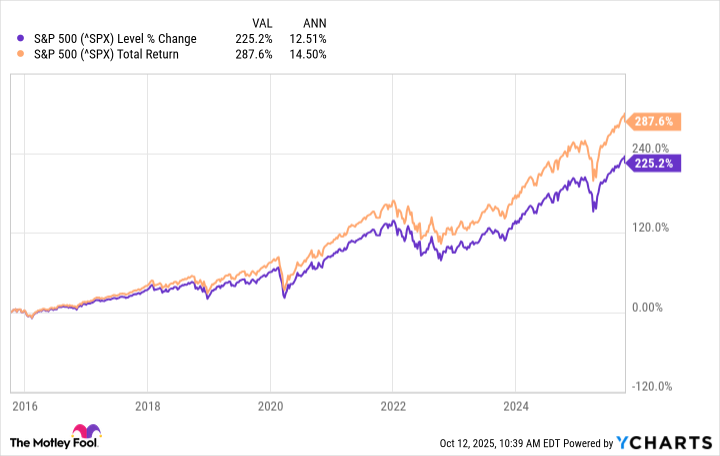There are plenty of big-name and successful investors on Wall Street, but you can make a legitimate argument that none have had the same impact as Warren Buffett. Since taking over Berkshire Hathaway in 1965, Buffett has turned the company into a trillion-dollar conglomerate that usually outperforms the market.
From 1965 through 2024, while Buffett has been at the helm of Berkshire, its stock has increased by over 5,500,000% (that's an annualized growth rate of 20%), while the S&P 500 (^GSPC +0.30%) has increased by over 39,000% (an annualized growth rate of 10%). Calling that impressive would be an understatement.
Despite Buffett and Berkshire's fairly consistent ability to outperform the market, one piece of advice that Buffett has repeatedly given to retail investors is to invest in an S&P 500 exchange-traded fund (ETF). It might not be the sexiest investment to make, but according to Julian Emanuel from Wall Street research firm Evercore ISI, it's one that could net investors a 37% return by the end of 2026.

Image source: Getty Images.
A great way to invest in the broader U.S. economy
The S&P 500 is an index that tracks 500 of the largest and most influential U.S. companies. All 11 major sectors are represented in its components, and the companies in it account for about 80% of all the value in the U.S. stock market, so it's often viewed as a way to invest in the nation's economy. Below is how the weighting of the S&P 500 was divided by sector as of Aug. 31:
- Information technology: 33.5%
- Financials: 13.8%
- Consumer discretionary: 10.6%
- Communication services: 10%
- Healthcare: 9.1%
- Industrials: 8.5%
- Consumer staples: 5.2%
- Energy: 3%
- Utilities: 2.4%
- Real estate: 2%
- Materials: 1.9%
The tech sector makes up so much of the S&P 500 because the index is weighted by market caps. This means that larger companies account for larger fractions of the index, and as the artificial intelligence (AI) boom has sent many megacap tech stocks skyrocketing, they've come to account for an outsized share of the S&P 500's value.
There are a few S&P 500 ETFs that investors can choose from, but my go-to -- and one that Berkshire held in its portfolio until recently -- is the Vanguard S&P 500 ETF (VOO +0.35%) because of its low cost. Its 0.03% expense ratio means that investors will pay only $0.30 per year for each $1,000 they hold in the fund.

NYSEMKT: VOO
Key Data Points
Why analysts think the S&P 500 could soar by 37%
At the time of this writing, the S&P 500's level is 6,552, while the Vanguard S&P 500 ETF's share price is just over $600. (Indexes don't have prices, but the ETFs that track them do.) Emanuel from Evercore ISI predicts that a bull-market bubble could lift the S&P 500 to 9,000 by the end of 2026. That 37% increase would put the VOO's price at close to $825.
The basis for this bullish bubble prediction is that AI adoption will continue to drive growing earnings for S&P 500 companies, which should improve investor sentiment. The more optimistic investor sentiment becomes, the more likely investors are to continue putting money into S&P 500 companies and pushing the index's valuation up.
A history of attractive returns
One thing remains true about the stock market: Nobody can reliably predict how stocks or ETFs will perform, particularly in the near term. Not me, not you, not Buffett, and not any Wall Street analysts. However, an investment's past performance can provide insights into its potential -- especially when it has been consistent over the long term.
The S&P 500 has historically averaged annualized returns of around 10% over the long term. Over the past decade, its returns have been even more impressive, averaging 12.5% -- and 14.5% when including reinvested dividends.
These returns are less than the predicted 37% gains over the 14 months or so, but they have still been impressive, and investing in S&P 500 index funds has made many investors some pretty good money over the years.
Regardless of whether the VOO hits Emanuel's ambitious target by the end of 2026, it's an investment that could be a staple holding in virtually any portfolio.






